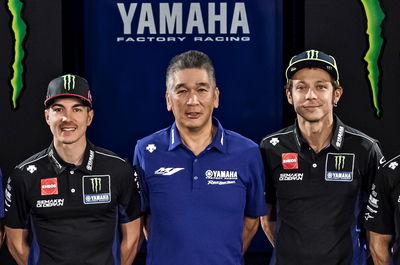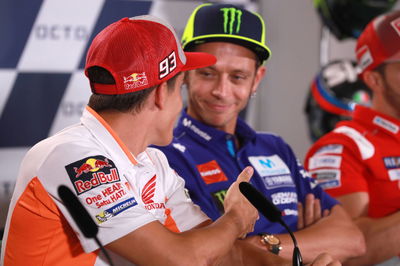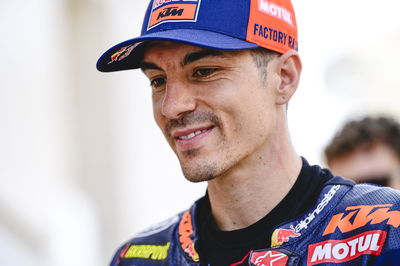Yamaha: 'Same direction' for Rossi, Vinales
Last year ended with Valentino Rossi and Maverick Vinales offering very different opinions on the state of Yamaha's 2019 MotoGP preparations.
Looking to rebound from a lone win at Phillip Island, two different engine specifications were on offer for Rossi and Vinales at Valencia and Jerez.

Last year ended with Valentino Rossi and Maverick Vinales offering very different opinions on the state of Yamaha's 2019 MotoGP preparations.
Looking to rebound from a lone win at Phillip Island, two different engine specifications were on offer for Rossi and Vinales at Valencia and Jerez.
But while Vinales felt confident the new package could fight for the 2019 title, Rossi - who preferred the same engine as Vinales - was far more pessimistic about the potential:
"If we race tomorrow, we are fifth, sixth, seventh… We don’t fight for the victory," he said.
Such comments prompted speculation that another engine design might appear for this week's opening 2019 test at Sepang.
However, Kouichi Tsuji, boss of Yamaha Motorsports, said in Jakarta on Monday that the M1s available at Sepang will be "based on one engine" design, but with "some different parts to evaluate… So, same engine, but something different on the 'outside' [of the engine] I would say."
In an interview with TMCblog.com at the Monster Yamaha team launch, Tsuji added that the bikes of Rossi and Vinales will not be developed in different directions:
"No, they are both in the same direction. Because to be honest at the last five races of last season both riders had almost the same set-up" - reinforcing rumours that the other Yamahas switched over to the new set-up used by Vinales at Burirum, which saw more weight moved to the rear of the bike.
"Maybe the last part, 1-5%, is rider preference and for sure there will be some small differences between their bikes, but it is not a different way," Tsuji said.
Tsuji also gave a new insight into Yamaha's difficulties over the past two seasons, saying that the 2017 bike was too sensitive, an issue that they overcorrected for 2018, leaving them with a bike that didn't respond well enough to set-up changes.
"The 2017 bike was too sensitive for the set-up, for the track temperature or circumstances like that. Then we tried to make like more capable, stable, so that small changes don't affect the bike or rider [for 2018]
"So [2017] it was too sensitive, then last year we tried to make it less sensitive, but finally we found some problems where if we changed some things the bike was not reacting."
Yamaha Racing managing director Lin Jarvis told TMCblog.com: "The biggest problem last year was consumption of the tyres and wheelspin, so we were lacking traction in many places.
"The engine was too aggressive in the first touch, when you get on the gas out of a corner. Our competitors could open the throttle quite hard with lean angle and [not spin].
"This is a matter of, partly chassis, partly engine, but also a lot of it is electronic management. That's where we were struggling."
"We have invested more in development in Italy and Michele [Gadda] is one of the key people. He is managing YMR electronic development," Tsuji confirmed.
Tsuji also gave an insight into the specification of the satellite Petronas Yamaha machines.
Both Franco Morbidelli and Fabio Quartararo will now have 2019 bikes. However, Morbidelli's A spec will get updates just two-four races after the factory team, with a delay of around six or seven races for rookie Quartararo.
Crash.net understands that the main difference for Quartararo's (cheaper) B spec bike is that he will have only five engine changes per season, instead of the seven changes allowed.
That means Quartararo will have less RPM than the other three Yamaha riders in order to lengthen the life of his engines.












